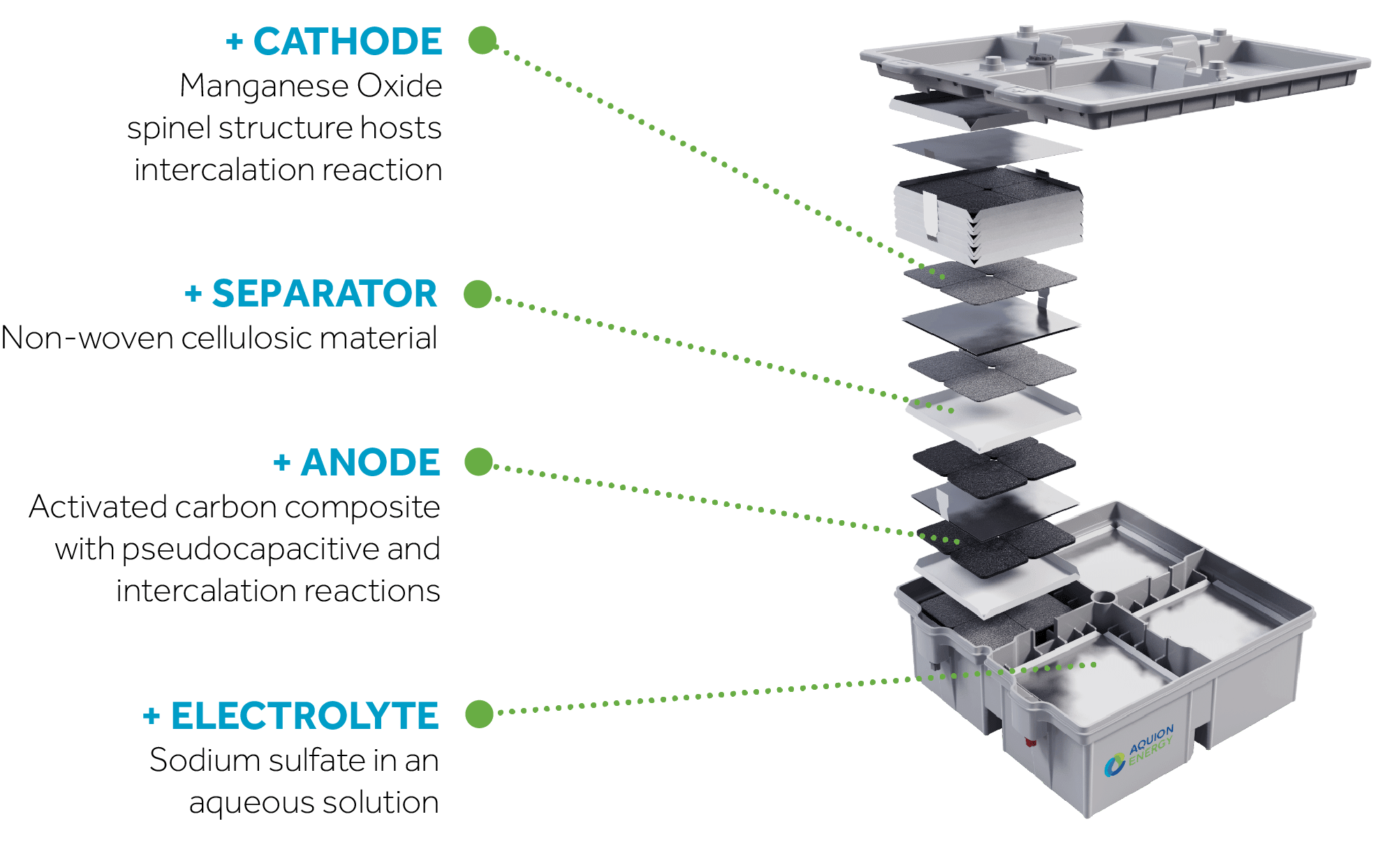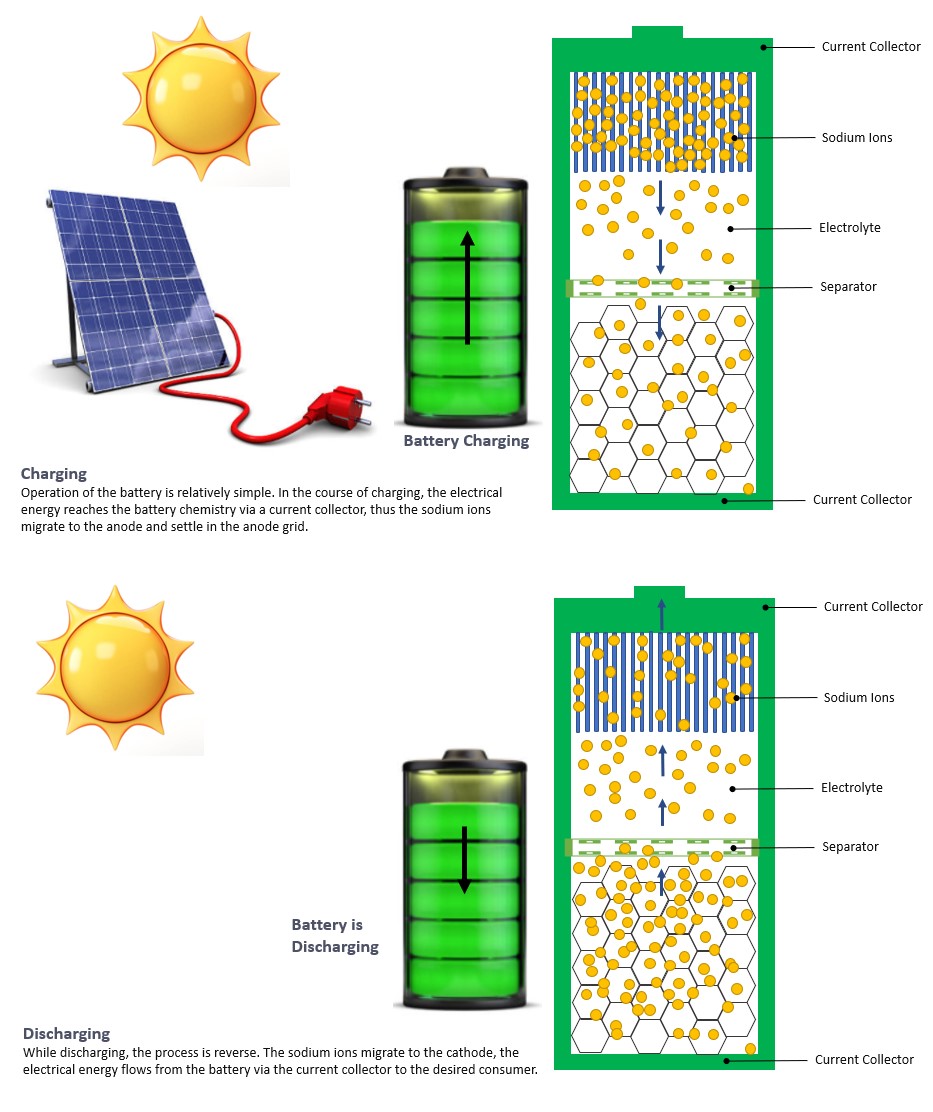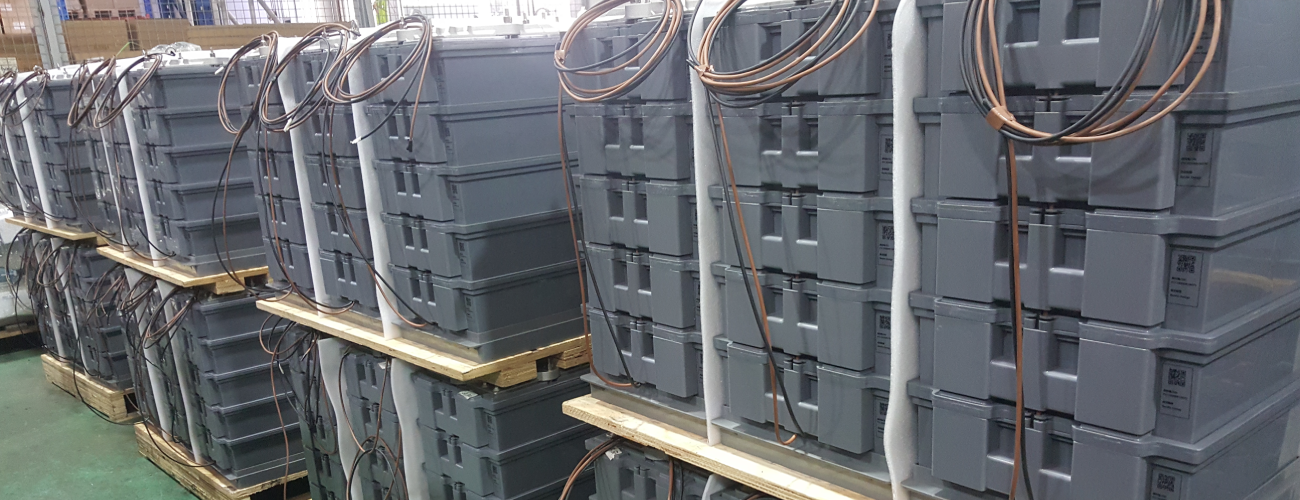What are Saltwater Batteries?
Just like any battery technology, saltwater batteries store electricity for use at a later time. The main difference between saltwater batteries and other energy storage options (for example, lithium-ion and lead-acid batteries) is their chemistry. In saltwater batteries, a liquid solution of salt water is used to capture, store, and eventually discharge energy. Whereas a traditional lithium-ion battery uses the element lithium as its primary ingredient for conducting electricity, a saltwater battery uses sodium, the same element found in table salt.
Advantages of saltwater batteries
Saltwater batteries have many advantages as a result of their chemistry. Here are a few that have helped make them a potential energy storage technology of the future, including when paired with a solar panel system:
Safety
While commercially-available batteries (like the Tesla Powerwall or LG Chem RESU) are safe for use, saltwater batteries excel in this category. The saltwater in the system means that there is essentially no fire risk with saltwater battery technology. Additionally, saltwater batteries don’t use the same toxic metals and other materials that most lead-acid or lithium-ion batteries use.
Easily recyclable
Another advantage of the lack of heavy metals and toxic materials in saltwater batteries is that they’re easier to recycle. As the use of batteries continues to increase worldwide, having plans in place for recycling used battery components will be essential to making batteries a truly sustainable energy technology.
Long lifecycle
Saltwater batteries have long lifecycles, which means they can be used for longer periods of time than many other battery options on the market. This has many implications – for example, you likely wouldn’t have to replace a saltwater battery as often as you would with most lithium-ion batteries, which can save you money in the long run.

The cell of an aqueous sodium ion battery consists of an anode, cathode, electrolyte, separator, current collector and battery housing. Construction of the battery is similar to a lead-acid battery, except that the materials used are all non-toxic and environmentally friendly.
Industry Leading Value
We believe in working collaboratively with client representatives at all levels of the organisation to ensure that the solution reached is the most efficient and cost-effective.HIGH PERFORMANCE
- Very high cycle life at 100% DoD
- Extremely abuse tolerant
- Self-balancing
- Wide operating temp
- Minimal degradation
SUSTAINABILITY
- Environmentally benign materials
- No corrosive acids or noxious fumes
- Suitable for broad deployment globally

EXCELLENT ECONOMICS
- Low acquisition costs ($/kWh)
- Better value than Pba or Li-ion
- No regular maintenance
- Little/no active management required
- Industry-leading total cost of ownership
UNPARALLELED SAFETY
- Not flammable, explosive, or corrosive
- No dangerous or toxic components
- Inherently safe chemistry
The Advantages of Sodium Ion Batteries Over Lead Acid
Batteries
Fuji Bridex's Sodium Ion Batteries offer many benefits over traditional lead acid batteries, including longer system life in both deep discharge and partial state of charge applications, greater durability, lower maintenance costs, and increased sustainability. The Sodium Ion Battery chemistry is optimal for any stationary, long duration, daily cycling application, including off-grid and weak-grid microgrids, telecom systems, and residential solar. Our products' significant technological advantage relative to lead acid batteries lead to vastly improved lifetime project economics for the end user.


